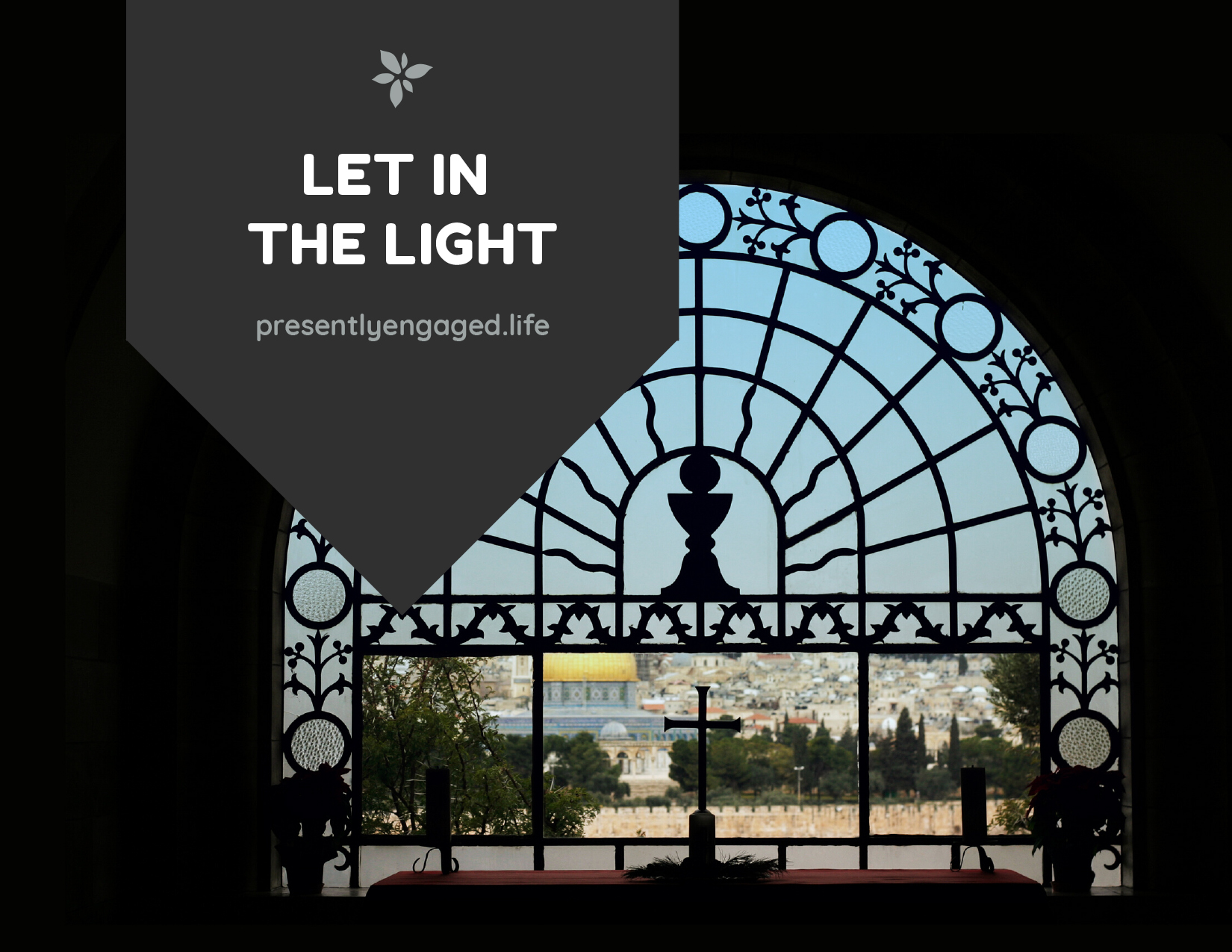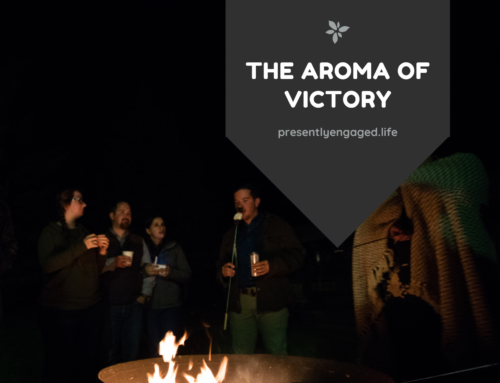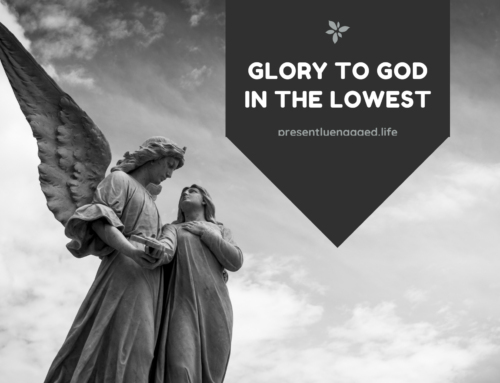Camera in hand, I would linger long around the cathedral’s outside. The external walls, bathed in the warm afternoon light, called for photographic exploration.
Only after thoroughly exploring all sides of the cathedral, would I peek inside for a quick snap.
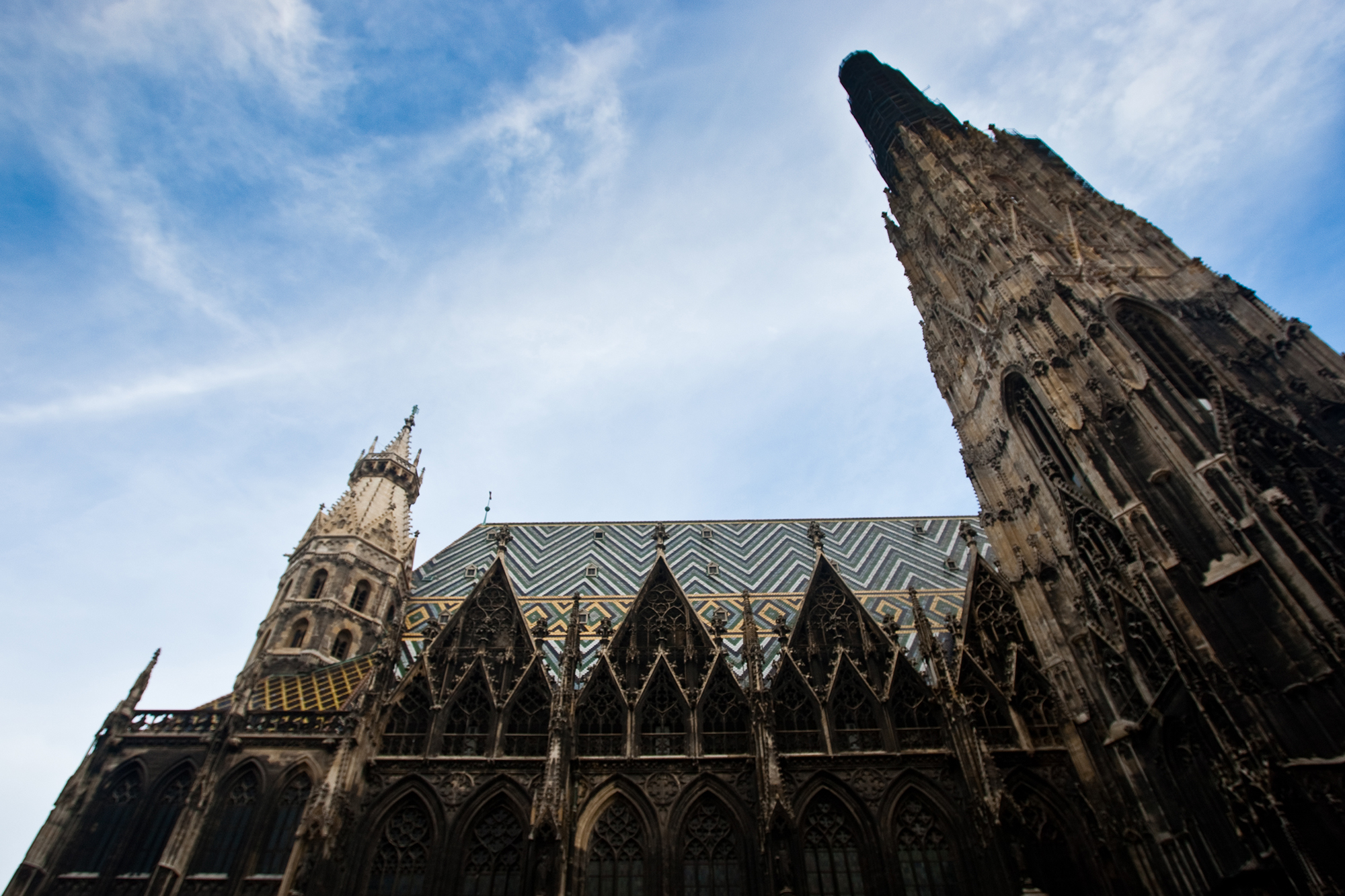
St. Stephen’s Cathedral, Vienna, Austria.
Perhaps it’s the nature of a European cathedral, of entering the Catholic world with a Protestant’s clothes, but I always feel like I’m interrupting—like I’m getting away with something. Opaque stain glass windows of diminutive size filter any light that may be trying to peek through the clouds. A cloudy day magnifies this effect.
Walking in, you can smell the musty history. There is a hush and a shuffle as visitors add their whispers to the whispers of decades and centuries. How many 9-year-old boys have been shushed, how many 12-year-old girls’ eyes have searched the eaves for something interesting to hold their attention, how many faithful and sincere knees have knelt in this place?
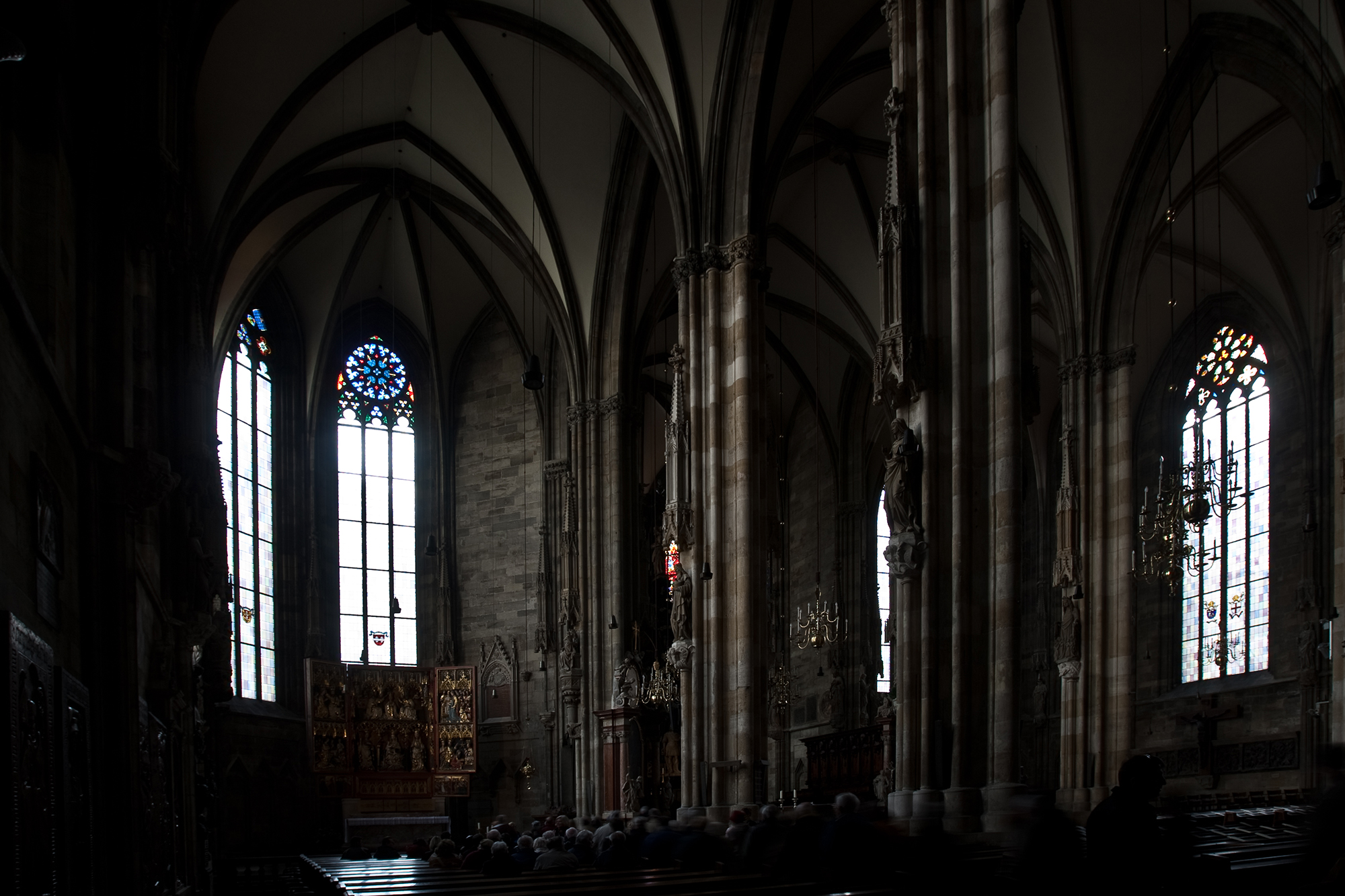
St. Stephen’s Cathedral, Vienna, Austria.
The beauty of a European cathedral is stunning, overwhelming, beautiful. The craftsmanship of a bygone era leaves me speechless every time. Even without the religious overtones that accompany walking past and in to St. Stephen’s Cathedral (Vienna) or St. Mark’s Cathedral (Venice) or the Hagia Sophia (Istanbul), the soaring architecture and design is almost a religion to itself.
Once inside, gild-plated saints and stain glass inspire one to pause and ponder and reflect. I used to love the outside of a cathedral more than the inside, though. With my camera and wide-angle lens, I could capture the detail of the structure, the visitors walking in and out, the anachronism of medieval and modern living side by side.
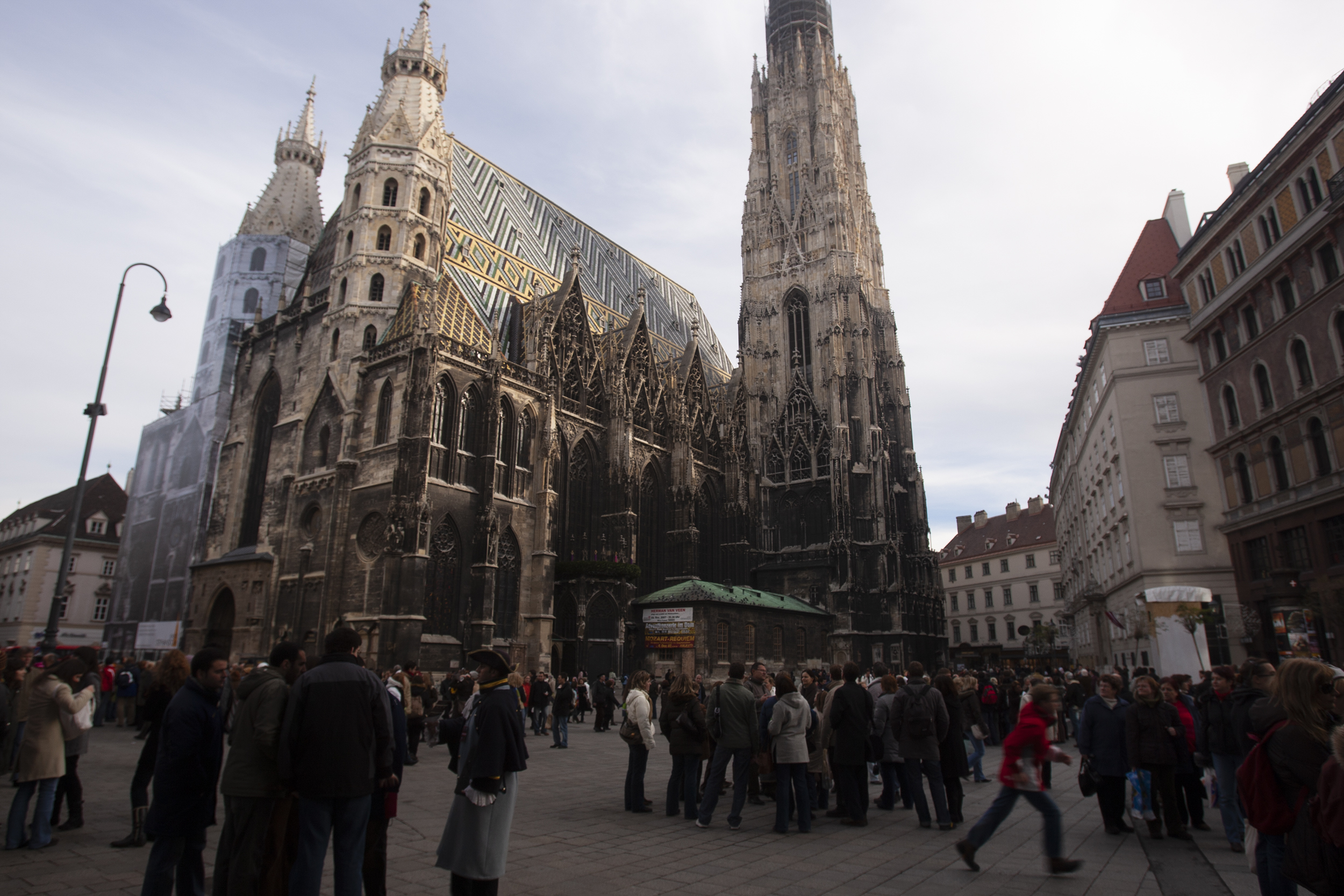
But then I discovered a photographic technique that changed how I feel about cathedrals.
A photographer can take a picture with the recommendation of the light meter for shutter speed and aperture, resulting in what the camera defines as medium tone. This works well on a grassy knoll, in standard lighting, or a well-lit room. But in an area of high contrast, a skilled photographer will consistently increase or decrease exposure to emphasize a desired part of an image. For example, decreasing exposure will emphasize the blue of the sky on a perfect day.
And increasing exposure will emphasize the details in the shadows in a dark, venerable cathedral. Most often this is achieved by opening the aperture as wide as possible, increasing the duration that the shutter is open, or both.
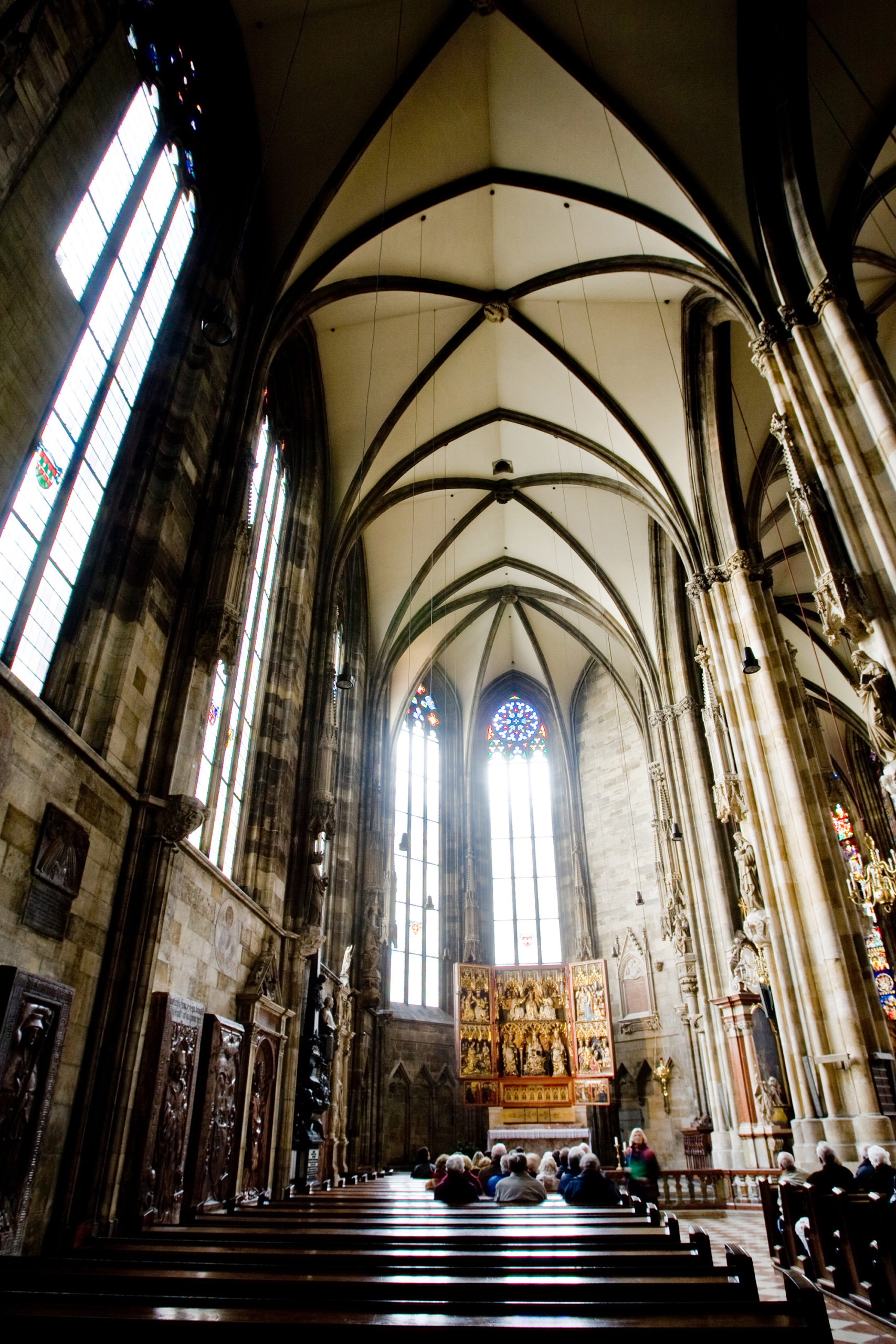
Candle light is insufficient in a cathedral. Natural light is unpredictable and variable. For a well-lit image, a photographer will over-expose the frame, so that additional light is recorded on the camera’s sensor.
Our hearts and lives are just a tad dark and musty at times, aren’t they? Personal drive is insufficient. The natural light of mood and feeling are unpredictable and variable. As writers with light, we need to open the shutter and let the light in. And it’s the beauty of an external source—the sun—that makes all the difference.
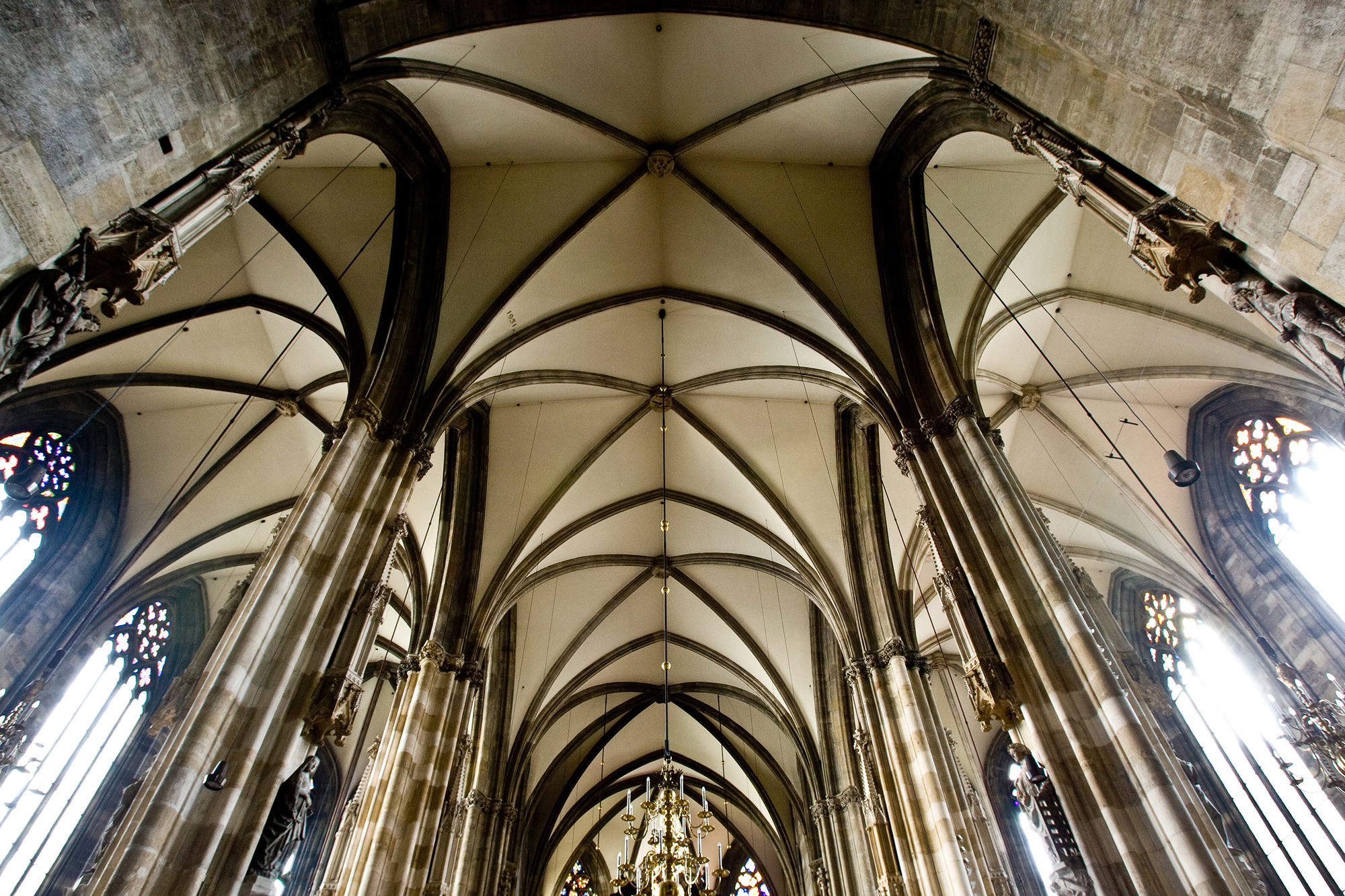
- If you want to see details, let the light in.
- If you want to inspire others, let the light in.
- If you want to see hope, let the light in.
It’s funny, but light makes me feel like I’m not interrupting. It adds a fresh, well, lightness to a holy place. 1 John 1:7 puts this truth into words: “But if we walk in the light, as he is in the light, we have fellowship with one another, and the blood of Jesus his Son cleanses us from all sin.”
What is one thing that you can do today to allow and embrace God’s light shining on you today? Open the shutter, and let in the light.
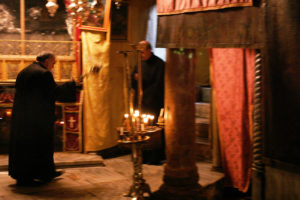
Church of the Nativity, Bethlehem, Israel.
A photographic side note: When you choose to have a long shutter speed, you will need a stable foundation. The many blurry images on my hard drive attest to the fact that I cannot handhold a 1/15 second exposure. So whether you use a tripod, a bench, a friend’s shoulder, or the floor itself, make sure you have a sturdy and stable foundation.
Isn’t that just like life?
Returning hate for hate multiplies hate, adding deeper darkness to a night already devoid of stars. Darkness cannot drive out darkness; only light can do that. Hate cannot drive out hate; only love can do that.
—Martin Luther King, Jr.

